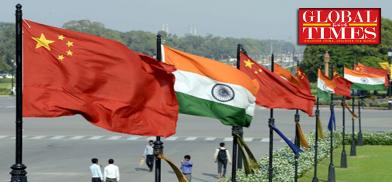Chinese media intriguingly sketchy on Galwan clash; casualties kept secret
One can only be surprised by the English-speaking Chinese media's coverage of the latest deadly border clash on June 16 between the Indian and Chinese armies in Ladakh

One can only be surprised by the English-speaking Chinese media's coverage of the latest deadly border clash on June 16 between the Indian and Chinese armies in Ladakh. Global Times, a daily tabloid newspaper run by People's Daily, the Chinese Communist Party (CCP) mouthpiece, only published two India-related articles on the 17 June, one calling for a curb on the boycott call of Chinese products by Indians, the other believing New Delhi was a pawn of Washington.
No newspaper till now has reported the 15 June bloody clash at Galway Valley, that led to the death of 20 Indian soldiers, including the commanding officer of the 16 Bihar Regiment who reportedly went unarmed to discuss troop disengagement as was agreed upon by the leadership of the two armies; and none states the number of People's Liberation Army (PLA) deaths - which is sought to be kept a secret on the Chinese side - nor do they give details and context of the situation.
In fact, only a few articles mention the subject at all, while it has made headlines around the world. Those who do so, either describe Chinese efforts to de-escalate the situation or the anti-Chinese sentiments among the Indian population. Only one mentions the 1962 conflict, to claim that should war break out, India would be humiliated worse than it previously was, praising the combat readiness and battle performance of the PLA and mocking the poor training and discipline of the Indian Army.
While Chinese media houses are prompt to comment on Indian officials’ statements, only a few quote Chinese ones, for there have not been many. Only Foreign Minister Wang Yi has released details of a phone conversation with his Indian counterpart S Jaishankar, in which he reportedly called for more communication and demanded a thorough investigation into the "aggression" of Indian soldiers. No other high-ranking CCP official made a statement reported in those newspapers, which alongside the absence of an official Chinese report of the events of June 15-16, left newspapers with little to write about.
Even as Hu Xixin, Global Times editor in chief, tweeted about 5 PLA casualties, the tweet was promptly taken down; Hu re-tweeted that based on what he knows, China faced casualties, giving no additional details. Chinese silence could be a sign that they consider the PLA to have been humiliated, coupled with Beijing’s traditional opacity surrounding any intel that might prove sensitive. The downplaying could also be a higher policy decision to avoid negative perception among the Chinese public or drawing too much global attention to it.
China portrayed as victim of Indian 'aggression'
Another key aspect of Chinese media coverage of the border clashes is the blame put on Indian soldiers for crossing the Line of Actual Control and starting hostilities after the situation had successfully de-escalated in the past week. No wrong has been done by the PLA, while the Indian Army's “hazardous” and “adventurous” behavior undermined peace negotiations, threatened the stability of the region and cost casualties (here again there is no confirmation that there are Chinese casualties, simply that India “threatened the lives of Chinese personnel”, causing “casualties”).
Besides, many, including Editor-in-chief Hu Xixin, said that India should not misinterpret China’s restraint; they are wise and peaceful, are not warmongers, but certainly not weak.
The victimization of China is a game that is not only played in the description of the 15 June events. Numerous articles talk about hate messages spread by the Indian community on social media. Global Times even dedicated an entire article to the story of an Indian studying in China, who allegedly insulted Chinese nationals, before apologizing. The article is just one of many examples how Chinese newspapers are prompt in denouncing the 'extreme nationalism' of the Indian community online.
Of course, no account of any military reverse is ever reported. Those same newspapers also denounce Indian calls for a boycott of Chinese products as both unfair and unrealistic, failing to mention the very recent disguised boycott of Australian products by China.
India portrayed as a 'pawn of Washington
Other articles aim at demonstrating how India plays into Washington’s hands, and can only afford to confront mighty China because of the backing of this ally. If a US spokesperson supports a peaceful resolution of the border confict, this is seen as merely “diplomatic rhetoric”. If US Secretary of State Mike Pompeo blames “Chinese provocations”, then surely India interpreted this as Western backing for a renewed assault on Chinese positions. The article concludes by a claim that India is a democracy simply because Western countries decided to label it as such, while India is actually a country where religious persecution is rife (failing of course to make any mention of state persecution of Uyghurs and other ethnic minorities in China).
This rhetoric of the "US puppet master" clearly reminds one of the Hong Kong situation, where protests were labelled a "foreign-backed" revolt.
Overall, it seems that only sketchy details of the border confrontation have been released to the Chinese public without giving it any broader context. There is no mention of the McMahon Line, only one account of the 1962 conflict (just the victory, not the actual conflict). Only a narrow nationalistic and biased account of the situation is given, portraying it as really a fight between 'superpowers' China and the US with India merely a "pawn" of the latter.








Post a Comment